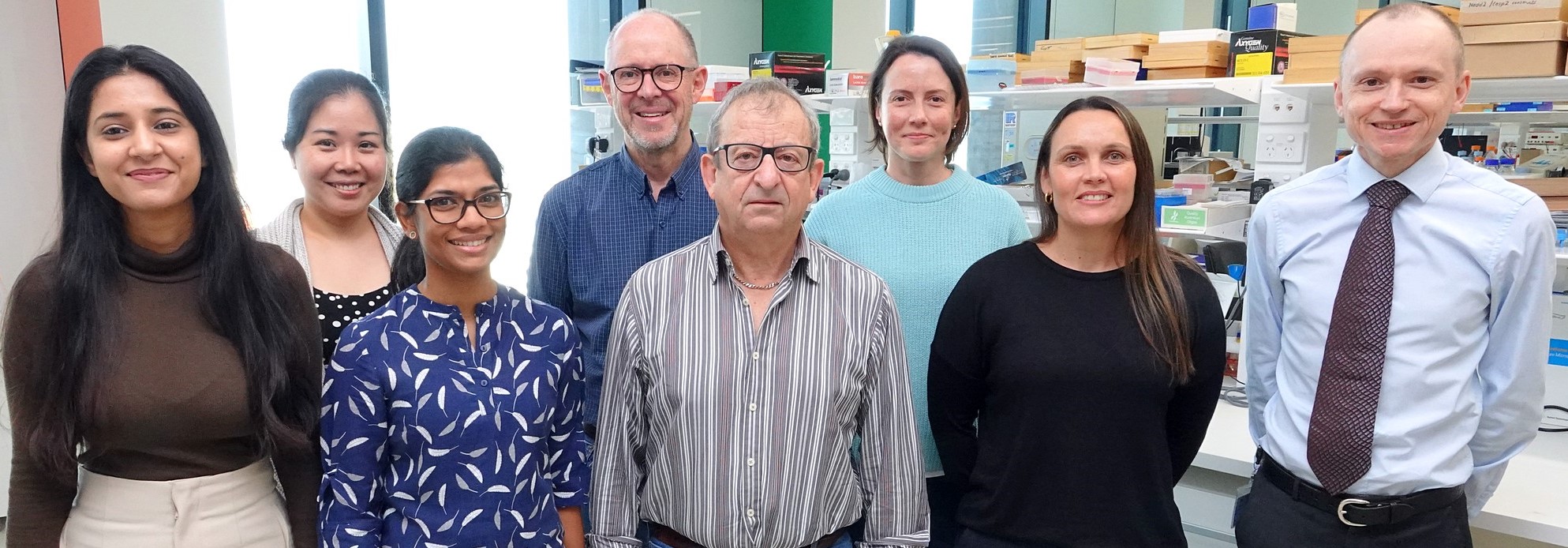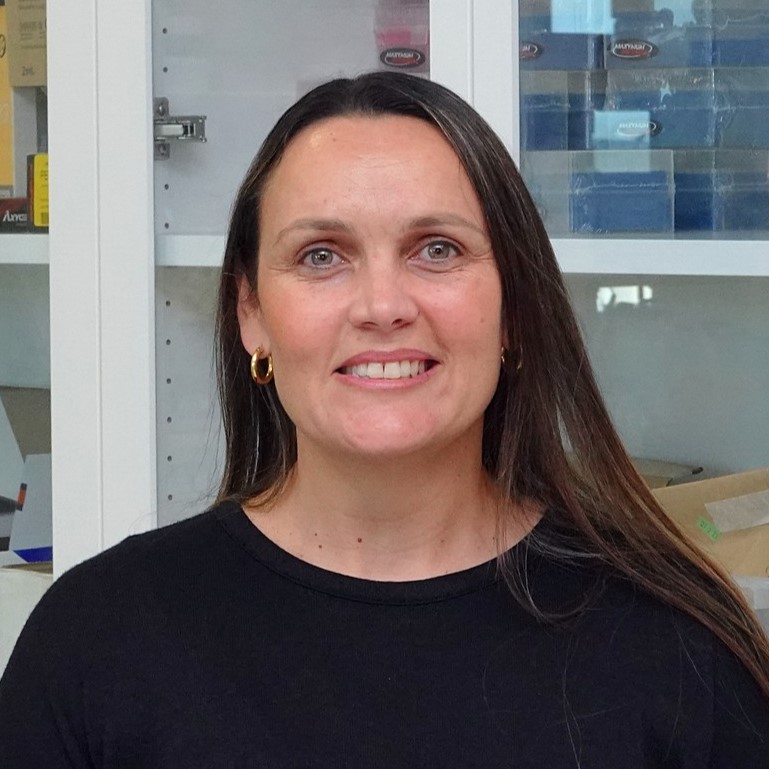Research Program Overview
The Acute Leukaemia Laboratory has a fundamental interest in acute myeloid leukaemia (AML) and related diseases such as the myeloproliferative neoplasms (MPN). AML is the most common form of acute leukaemia in adults. While rare in children, childhood AML is associated with long-term sequelae and poor outcomes following relapse. Overall survival for adult AML is only 30-40%, and for certain subtypes that are particularly resistant to therapy survival rates are dismal and median overall survival is as low as 10 months. MPN is a group of chronic diseases characterised by high blood cell counts, increased risk of bleeding and clotting, and a propensity to transform to AML. Both AML and MPN show considerable genetic diversity and variable prognostic outcomes, with poorest outcomes for AML.
Our research strives to better understand the mechanisms underlying AML and MPN, with the goal of improving treatment outcomes. We are using new approaches and technologies to better understand signalling and DNA repair pathways that are disrupted to lead to disease initiation and progression as these will provide targets for new therapies. As the heterogeneity of AML presents a major challenge, a key aim is to develop therapies targeting common biological pathways and transcriptional programs that are essential for AML growth and survival. We are also investigating approaches to improve patient stratification in AML and MPN, as well as the role of rare damaging, germline variants affecting cancer predisposition genes, which provides critical information for selection of bone marrow transplant donors, and for the families of AML patients.
Current Research Projects
- Development of novel small molecules that target activity of the MYB oncoprotein in AML.
- Mechanisms of disease initiation in childhood AML and the role of germline cancer predisposition variants
- Characterising the defect in homologous recombination repair in AML and sensitivity to DNA damage therapies.
- Characterising the mechanisms associated with high-risk AML defined by a unique DNA methylation marker
- Engaging cord blood-derived natural killer cells to induce cytotoxicity in childhood AML
Laboratory staff

Laboratory head
Team Members
Postdoctoral Research Scientists
Research Assistant
Student
- Ms Bhumika Tirthani
bhumika.tirthani@mymail.unisa.edu.au
Select Recent Publications
- Bassal MA, Samaraweera SE, Lim K,...Tenen DG, Robinson N, Ross DM, Majeti R, Gonda TJ, Thomas D and D’Andrea R. Rare Respiratory Chain Complex I Variants Reveal Genetic and Targetable Vulnerability of AML with the IDH1 Oncogenic Mutation. Nature Communications, 13(1):2614, (2022).
- Samaraweera SE, Wang PP, Li KL, Casolari DA, … Ross DM, Moore AS, Gonda T, Hahn CN, D'Andrea RJ. Childhood Acute Myeloid Leukemia shows a high level of germline predisposition. Blood. 138(22):2293-2298 (2021).
- Duy C, Li M, Teater M, … D'Andrea RJ, Becker MW, Paietta EM, Mason CE, Carroll M, Melnick AM. Chemotherapy Induces Senescence-Like Resilient Cells Capable of Initiating AML Recurrence. Cancer Discovery 11(6):1542-1561 (2021).
- Rapaport F, Neelamraju Y, Baslan T, Hassane D, Gruszczynska A, Robert de Massy M, Farnoud N, Haddox S, Lee T, Medina-Martinez J, Sheridan C, Thurmond A, Becker M, Bekiranov S, Carroll M, Moses Murdock H, Valk PJM, Bullinger L, D'Andrea R, Lowe SW, Neuberg D, Levine RL, Melnick A, Garrett-Bakelman FE. Genomic and evolutionary portraits of disease relapse in acute myeloid leukemia. Leukemia. 35(9):2688-2692 (2021).
- Salik B, Yi H, Hassan N, … D'Andrea RJ, Murriel C, Wang JY. Targeting RSPO3-LGR4 Signaling for Leukemia Stem Cell Eradication in Acute Myeloid Leukemia. Cancer Cell. 38:263-278.e6 (2020).
- Maung KZY, Leo PJ, Bassal M, Casolari DA, Gray JX, Bray SC, Pederson S, Singhal D, Samaraweera SE, Nguyen T, Cildir G, Marshall M, Ewing A, Duncan EL, Brown MA, Saal R, Tergaonkar V, To LB, Marlton P, Gill D, Lewis I, Deans AJ, Brown AL, D'Andrea RJ, Gonda TJ. Rare variants in Fanconi anemia genes are enriched in acute myeloid leukemia. Blood Cancer J. 8(6):50 (2018).
- Beck D, Thoms JAI, Palu C, Herold T, Shah A, Olivier J, Boelen L, Huang Y, Chacon D, Brown A, Babic M, Hahn C, Perugini M, Zhou X, Huntly BJ, Schwarzer A, Klusmann JH, Berdel WE, Wörmann B,Büchner T, Hiddemann W, Bohlander SK, To LB,Scott HS, Lewis ID, D'Andrea RJ, Wong JWH, Pimanda JE. A four-gene LincRNA expression signature predicts risk in multiple cohorts of acute myeloid leukemia patients. Leukemia. 32(2):263-272 (2018)
- Casolari DA, Nguyen T, Butcher CM, Iarossi DG, Hahn CN, Bray SC, Neufing P,Parker WT, Feng J, Maung KZY, Wee A, Vidovic L, Kok CH, Bardy PG, Branford S, Lewis ID, Lane SW, Scott HS, Ross DM, D'Andrea RJ. A novel, somatic, transforming mutation in the extracellular domain of Epidermal Growth Factor Receptor identified in myeloproliferative neoplasm. Sci Rep. 7(1):2467 (2017).








